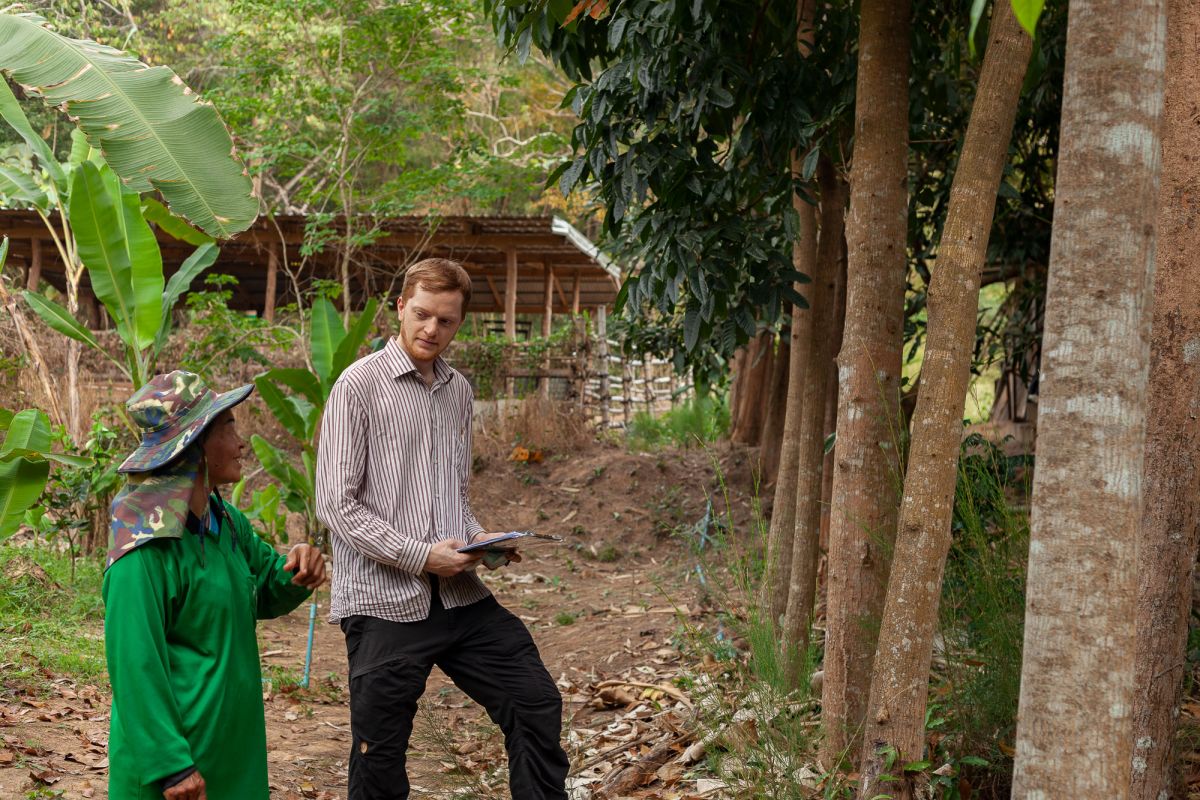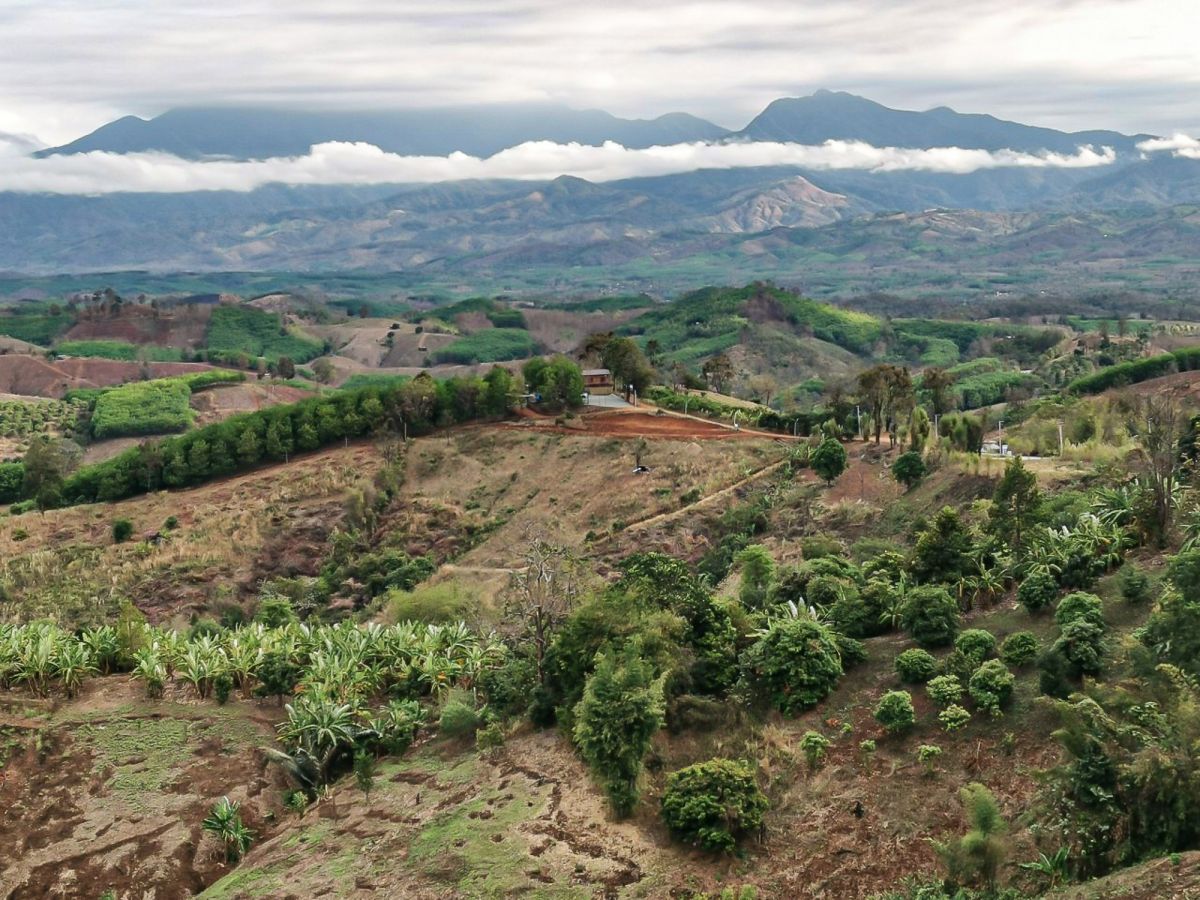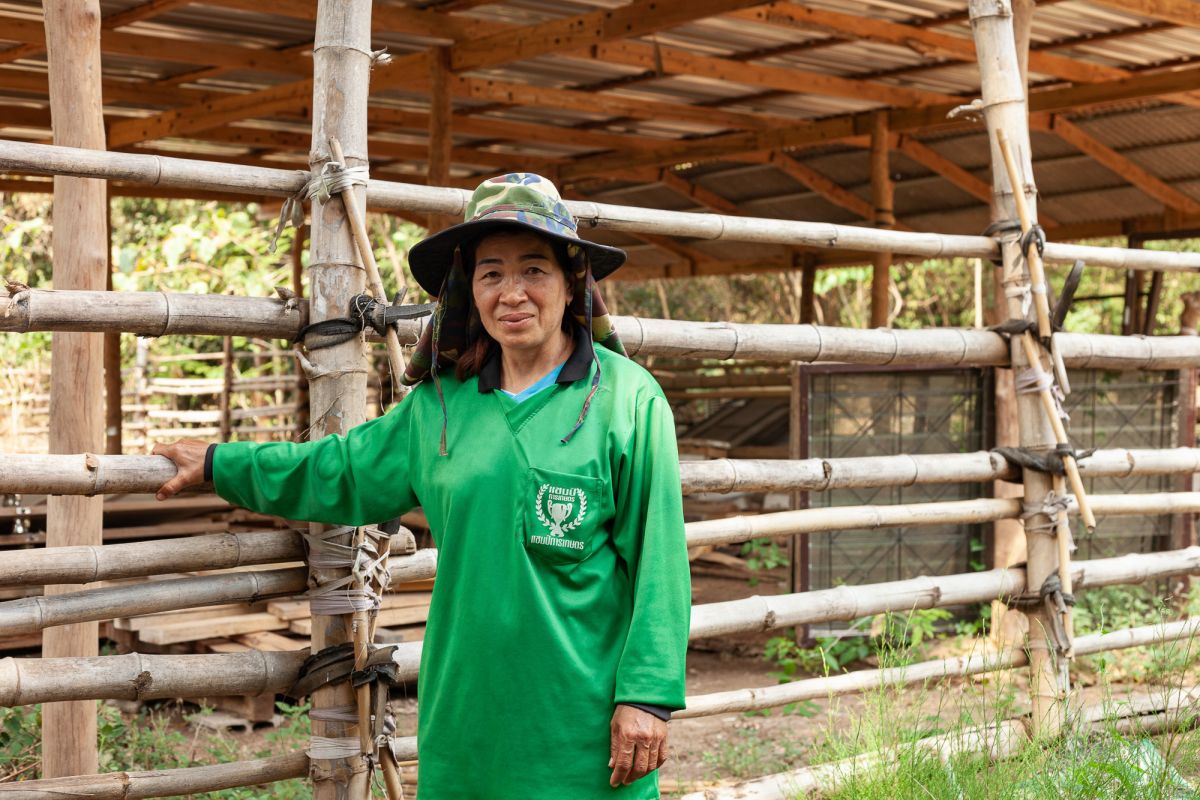Forest restoration requires smallholders and their access to safe and fair financing

The Royal Thai Government announced plans, in 2020, to increase the national tree cover to 55 percent by 2037. It is an ambitious target. Across the region, other governments have set similar goals. While taking me through her small forest garden in Thailand’s Phetchaburi Province, farm owner Pom and I discussed how smallholders can contribute to achieving the country’s forest restoration ambition.
Forest landscape restoration is a win–win promise to improve livelihoods while restoring the world's degraded and deforested areas. Restoration efforts from the public sector certainly are needed. But they most likely will not be enough in tropical landscapes with a variety of land users and stakeholders.
If these ambitious targets are to be achieved, it will also be because of smallholders of forested land like Pom who contribute the substantial time and financial investments to plant and tend to their trees.

The individual scale of forest and farm smallholders may be small, but their collective scale and global potential is large, at an estimated 1.5 billion forest-dependent smallholders worldwide. Mobilizing forest smallholders’ sustained involvement in reaching the forest restoration targets requires a plethora of prerequisites, ranging from secure tenure and silvicultural extension to market access and safe and fair financing.
Many smallholder farmers say the lack of safe and fair financing is what keeps them from planting to their potential. And that, Pom adds, is what could keep the government’s target from being reached.
A general challenge of tree-based livelihoods is the typically long rotation periods. In addition to the upfront costs of stand establishment, management and harvest, forest smallholders usually must wait between 15 and 30 years for significant revenues, such as with teak (Tectona grandis) stands. Access to safe and fair financing for forest smallholders makes the long gestation period manageable.
In contrast to these long gestation periods and implied gaps in cash flow, smallholders can more quickly obtain revenue from agricultural land use within months with such options as maize monocropping. This is what smallholders have been doing for years on the denuded slopes in Thailand’s Nan Province. Hence, tree planting creates substantial opportunity costs.
Some sources of rural financing for smallholders can come with risks due to exploitive loan agents or because their chosen land use may be unsustainable. Declining yields may eventually lead to a debt trap.
Many forest smallholders lack sufficient savings or are unwilling to use their savings to invest in tree cultivation, and thus they opt for the quick returns from monocropping. They need reliable financing or subsidies to shift their land use to forest restoration.

Financial schemes for smallholder forestry
The Economic Forest Plantation Project ran in Thailand from 1994 to 2006 and provided smallholders with upfront subsidies for tree plantation establishment and initial management. It was a largely viable scheme that encouraged many smallholders until its discontinuation. Nowadays, some of those recipients lack harvesting rights to harness the financial benefits from their investment, and subsidies are no longer available.
A Tree Bank system followed, in 2006, to assist with the challenging shift away from maize monocropping and towards more sustainable livelihoods, including tree planting. On paper, the system set up more than 6,000 local self-administered associations of forest smallholders and tree growers. The provision for tree inventory, valuation and capacity-building increased their awareness of the value of their growing “green assets”. In practice, however, the funding and support to the local Tree Bank members has been insufficient.
Tree banks offer through the Bank for Agriculture and Agricultural Cooperatives the use of trees as collateral, in addition to the conventional land title. The model has had a limited uptake. Another criticism is the obligatory inclusion of land ownership as collateral. Smallholders in places such as Nan Province do not have or feel reluctant to put up land ownership as collateral out of concern for their livelihood. Other constraints include time-consuming tree valuation processes as well the non-competitive and inflexible loan terms. Smallholders have reported limited progress with the Tree Bank system, which has led many of them to lose interest in the approach. This has reduced the likelihood of successful forest restoration.
Policy improvements needed for financing smallholder forest restoration
Financial solutions must reflect the diversity of forest smallholders. These solutions should flexibly match different scales and livelihoods of forest smallholders. The Tree Bank approach is a promising step towards the aggregation of forest smallholders. But there is a need for more consistent long-term support to replace sporadic and inconsistent programs. This calls for more flexibility for the Tree Banks and tree collateral procedures, such as a smaller minimum group size, increased value of trees to contribute to the overall loan amount and the availability of plantation establishment costs.

A promising alternative is the approach of a local financing institute in Nan Province, which accepts trees as collateral, in combination with joint debtors, such as family members or friends who vouch for the loan.
Another potential axis to improve the commercialization of timber by smallholders is to increase the local ownership of wood processing through investments in the capacities of the local Tree Banks or other associations.
Creating a separate institution such as the Tree Bank Fund could ensure long-term specialized and independent funding and capacity-building for smallholders as well as a safe source of affordable and forestry-specific loans. This is envisioned in the draft Tree Bank Act. The draft law has never been adopted.
Safe and fair financing for smallholder forestry is just one of many requisites needed to mobilize smallholders to ensure that they profit from the win–win promise of forest landscape restoration. Certainly, it will take more than compelling financial solutions to mobilize smallholders, including, for example, clear land tenure as well as eased access to harvesting rights and transparent terms for commercialization. Furthermore, forest restoration must always carefully balance both the need for food security and increased tree cover.
But safe and fair financing is where we can start to make the changes needed to bring on board the estimated 1.5 billion smallholders worldwide who can contribute to forest restoration. The high ambitions for forest restoration should come together with equally high ambitions for supporting forest smallholders. This process must actively integrate smallholders as allies and respond to their livelihood needs, as opposed to mere service providers taken advantage of for a greater policy goal.
###
Marcel Starfinger is Research Associate and doctoral candidate at the Chair of Tropical and International Forestry, Technische Universitaet Dresden in Germany. His research on financing smallholder forestry in Thailand is part of the FLOURISH initiative led by RECOFTC. For more information on FLOURISH visit www.recoftc.org/projects/flourish.
RECOFTC's work is made possible with the continuous support of the Swiss Agency for Development and Cooperation (SDC) and the Swedish International Development Cooperation Agency (Sida).

